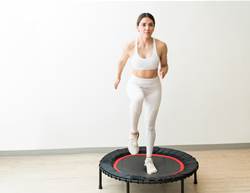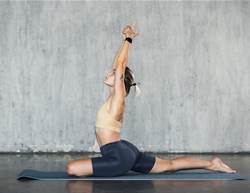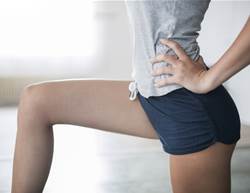Getting your heart rate up supports longevity. Regular exercise lowers the risk of type 2 diabetes, heart disease and other conditions and helps with healthy weight management. Two of the most accessible cardio options are cycling and walking. So when it comes to cycling vs walking, which is better for weight loss?
Below, experts explain why you might choose cycling or walking and how each can fit into a healthy routine.
Benefits of cycling
Cycling, on a stationary bike or outdoors, offers broad health gains. “General benefits include improved mood, lower stress, reduced cardiovascular risk and help with weight control,” says nurse and fitness instructor Jenniffer Armendariz.
It’s powerful cardio
“Cycling helps burn more energy which can support weight loss,” Armendariz says. As a guide, a 68 kg person riding at about 19–21 km/h may burn roughly 540 kcal (~2,260 kJ) in an hour.
You can dial up intensity
“Increase resistance to work harder and build muscle in the legs including glutes, quads and hamstrings,” says registered dietitian and personal trainer Emer Delaney. Muscle is metabolically active, so adding it can raise resting energy use. With sensible nutrition, regular cycling can help create the energy deficit needed for lasting weight loss.
It’s low impact
Cycling strengthens the heart, lungs and legs without excessive joint load, which suits people with knee, ankle or hip pain or those returning from injury. Research also links regular riding with lower odds of knee osteoarthritis and less knee pain by age 65 compared with non-cyclists.
Potential downsides of cycling
“I wouldn’t say there are any downsides, but you need to be mindful that cycling really focuses on the lower body,” says Delaney. If you ride often, balance it with upper-body strength work and some core and mobility training. Outdoor riders should also consider safety. “The risk of injury and falls is increased,” says Armendariz. Use a helmet and visible gear, follow road rules and choose well-lit routes.
Benefits of walking
“Walking is simple, accessible and hugely underrated,” says Delaney. It is a great entry point if you do not have an established routine or prefer to avoid the gym. While cycling has a higher ceiling for energy burn per session, brisk walking still lifts metabolism and supports weight control.
You can also increase intensity: pick up the pace, add short intervals, choose inclines or hills if available or use a treadmill hill session to raise heart rate.
A major perk is that walking is weight bearing, which supports bone health. Research shows that regular brisk walking can increase bone density and help reduce the risk of osteopenia or osteoporosis. A weighted vest can add a further training stimulus when appropriate.
“Other benefits include fewer falls, lower rates of depression and type 2 diabetes,” Armendariz says. Walking has also been linked with a reduced risk of death from heart disease and cancer. A recent review found that compared with people who walked 2,000 steps a day, those reaching 7,000 or more had:
- 25% lower risk of death from any cause
- 25% lower risk of developing cardiovascular disease
- 47% lower risk of death from cardiovascular disease
- 37% lower risk of death from cancer
- 14% lower risk of type 2 diabetes
- 38% lower risk of dementia
- 22% lower risk of depression
- 28% lower risk of falls
Potential downsides of walking
There are few downsides to making walking your main cardio. That said, walking alone usually burns fewer kilojoules than higher-intensity options like cycling or running, says Delaney.
It also does not build much muscle mass, so if walking is your only cardio, pair it with regular resistance training to protect and build muscle.
To avoid overuse niggles such as shin pain or plantar heel pain, increase distance or pace gradually, mix in rest days and vary surfaces where possible.
Cycling vs. walking: Which is better for weight loss?
Weight loss requires an energy deficit, so cycling can have an edge because it burns more kilojoules per minute when effort is matched. Output varies widely though.
“I would not say one is better than the other. It depends on preferences, lifestyle and what you can do consistently,” says Delaney. Cycling can deliver higher burn in less time and builds leg strength. Walking is more accessible, often easier to sustain, supports bone health and is free.
The best choice is the one you will keep doing. “There is no downside to choosing one form of cardio over the other,” Armendariz says. “Choose the exercise you enjoy.”
How to make it work
- Aim for most days of the week
- Add hills, pace changes or intervals to either activity for extra burn
- Include 2 days of strength training to maintain muscle and support results
- Prioritise safety outdoors with aware route choices and road rules










